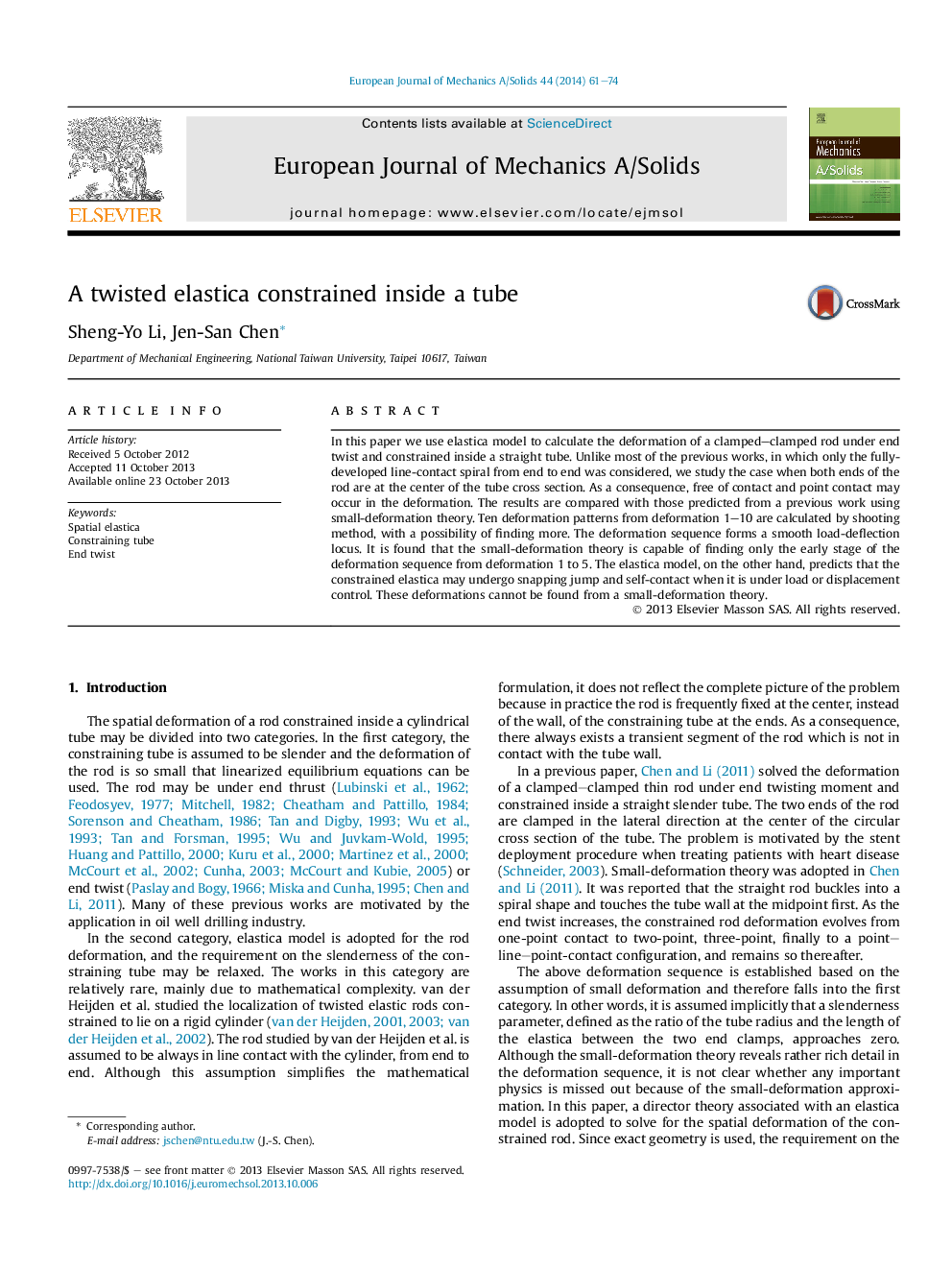| Article ID | Journal | Published Year | Pages | File Type |
|---|---|---|---|---|
| 774096 | European Journal of Mechanics - A/Solids | 2014 | 14 Pages |
•The two ends of the rod are clamped at the center of tube cross section.•Free of contact, point contact, and line contact may develop in the deformation.•The results from elastica model and small-deformation theory are compared.•Small-deformation theory can predict only the early stage of deformation.•Elastica model predicts that snapping jump and self-contact will occur.
In this paper we use elastica model to calculate the deformation of a clamped–clamped rod under end twist and constrained inside a straight tube. Unlike most of the previous works, in which only the fully-developed line-contact spiral from end to end was considered, we study the case when both ends of the rod are at the center of the tube cross section. As a consequence, free of contact and point contact may occur in the deformation. The results are compared with those predicted from a previous work using small-deformation theory. Ten deformation patterns from deformation 1–10 are calculated by shooting method, with a possibility of finding more. The deformation sequence forms a smooth load-deflection locus. It is found that the small-deformation theory is capable of finding only the early stage of the deformation sequence from deformation 1 to 5. The elastica model, on the other hand, predicts that the constrained elastica may undergo snapping jump and self-contact when it is under load or displacement control. These deformations cannot be found from a small-deformation theory.
